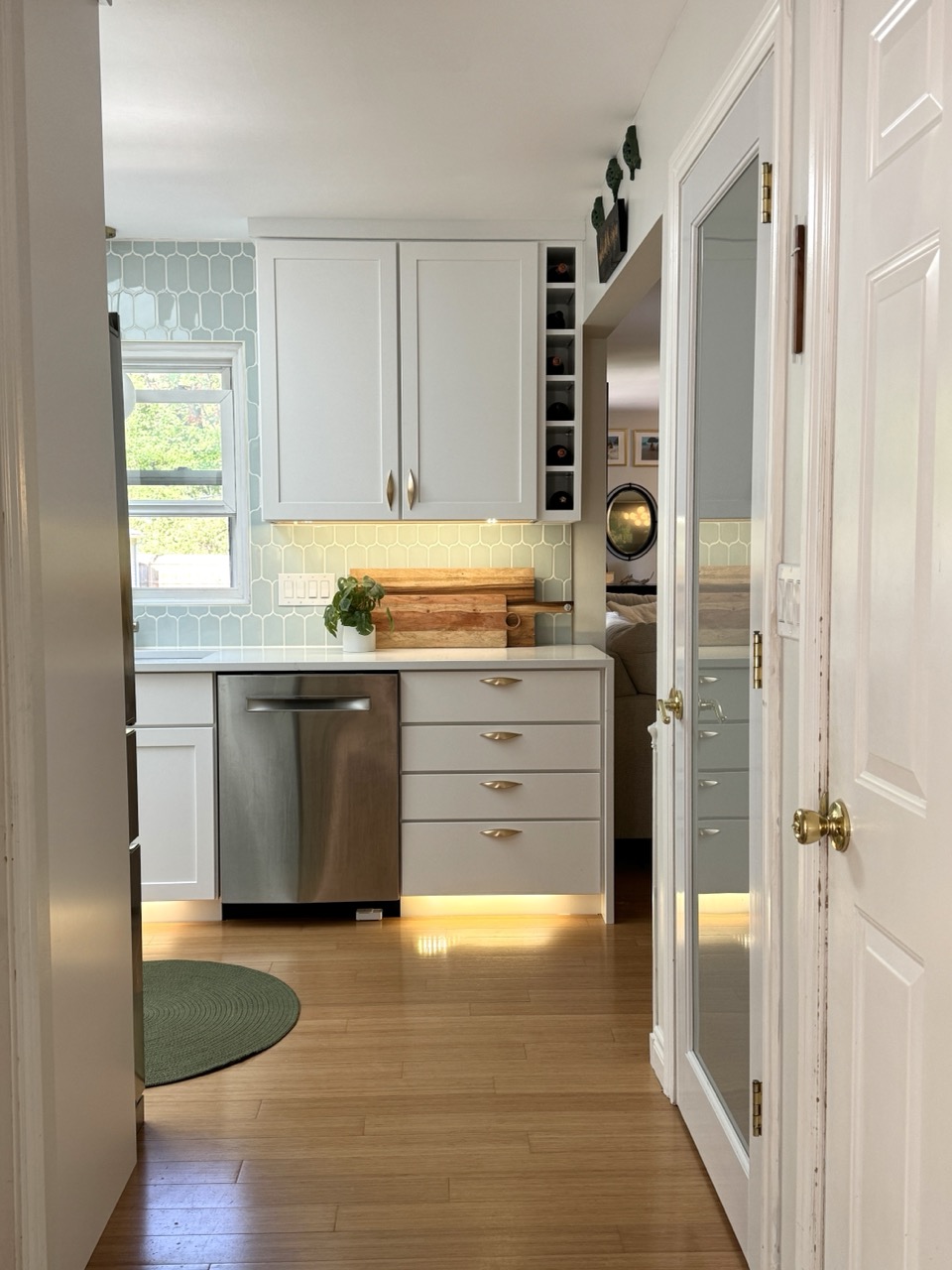
When planning a kitchen, lighting deserves just as much attention as cabinetry and layout. The right combination of light sources not only makes the space more functional but also shapes its mood and character throughout the day.
Most of the kitchens we renovate start with just a single overhead fixture in the center of the room—or sometimes a harsh fluorescent light box that’s both unflattering and hard on the eyes. It’s rarely enough. There usually aren’t enough light sources, and there’s often no balance between task lighting and ambiance. On top of that, outdated bulbs tend to give off a dim yellow cast, which is far from ideal considering how much time we spend in our kitchens. A well-designed lighting plan makes a dramatic difference—it truly takes your space from night to day.
So, where do you begin? With natural light. It’s the foundation of any well-lit kitchen. We always recommend checking colors and materials near a window with artificial lights turned off. That way, you get a true sense of how each finish will look in the space. Large windows, glass doors, or a strategically placed skylight can flood the room with daylight, making it feel open and fresh. Natural light not only enhances finishes—it reduces the need for artificial light during the day and provides the perfect starting point for the rest of your lighting plan.
Next comes task lighting. This typically means recessed ceiling lights (often called wafers or cans) that provide essential, general illumination. But placement is key: the beam should fall between you and the upper cabinets—not directly overhead—so you don’t end up working in your own shadow. A well-thought-out grid of recessed lights gives you clean, even light without glare.
From there, we layer in additional lighting to bring warmth, style, and flexibility. Statement fixtures like chandeliers or pendants help define the personality of the kitchen and offer ambient light, especially over islands or dining spaces. Pendants can be both functional and decorative, giving focused light where you need it while adding charm and interest.
And then there’s under-cabinet lighting—a small detail that makes a big impact. It lights your countertops right where you’re working, eliminates the dark zone beneath upper cabinets, and adds a subtle glow that enhances the whole room. It’s one of the most practical and worthwhile lighting additions you can make.
Finally, there’s the evening transformation. When the day winds down and it’s officially “lamp o’clock,” turning off the overheads and switching on warm accent lighting—like a soft glow above the range or a discreet light at the sink—makes your kitchen feel calm and inviting. These softer touches help shift the mood from busy and functional to peaceful and homey.
Lighting is one of the most important—and most overlooked—elements in kitchen design. It influences how the space works, how it feels, and how everything in it looks. The right mix of natural light, recessed lighting, statement pieces, and under-cabinet lighting brings both function and beauty. Since every kitchen is different, working with a designer ensures each layer is carefully planned—from placement to color temperature—so your kitchen feels bright, balanced, and thoughtfully complete.
